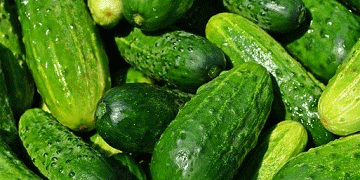Russia’s agricultural sector has been showing sustained growth in vegetable production, with 2024 proving to be another year of impressive progress. According to the latest data from the Federal Ministry of Agriculture, more than 3.3 million tons of open-field vegetables have been harvested so far, which represents an increase of 17.8 thousand tons compared to the same period in 2023. This continued rise reflects the success of both large-scale and small-scale producers in optimizing yields and implementing modern agricultural techniques.
Open-Field Vegetable Production: Regional Leaders
The top contributors to Russia’s open-field vegetable production include the Astrakhan, Volgograd, and Moscow regions, as well as Krasnodar Krai and the Kabardino-Balkar Republic. These regions benefit from favorable climates, well-developed agricultural infrastructure, and government support aimed at boosting production and ensuring food security.
The Astrakhan region, known for its vast areas of fertile land, remains a key player in the production of onions, carrots, and tomatoes. Similarly, the Volgograd region is recognized for its large-scale production of cucumbers and other staple vegetables. Krasnodar Krai, one of the country’s agricultural powerhouses, continues to be a vital contributor with its extensive farming areas and focus on both open-field and greenhouse production.
Greenhouse Vegetable Production: A Steady Output
Greenhouse vegetable production in Russia is another crucial component of the country’s agricultural success. In 2024, Russian farmers produced about 1.2 million tons of greenhouse vegetables, maintaining a steady output compared to the previous year. Of this, tomatoes account for 498.7 thousand tons, while cucumbers contribute 641.9 thousand tons.
Leading regions for greenhouse production include the Lipetsk, Moscow, Kaluga, and Volgograd regions, as well as Krasnodar and Stavropol Krais. These regions have invested heavily in modern greenhouse infrastructure, allowing for year-round production and the ability to meet both domestic demand and export goals.
Greenhouse farming has been particularly important in ensuring the stability of the tomato and cucumber markets, which are among the most consumed vegetables in Russia. The use of advanced technologies, such as controlled-environment agriculture (CEA), drip irrigation, and biocontrol methods, has allowed these regions to boost productivity while maintaining high-quality standards.
Government Support and the Role of Innovation
The growth in vegetable production can also be attributed to the continuous support from the Russian government. Programs aimed at improving agricultural efficiency, such as subsidies for the construction of new greenhouses and the introduction of precision farming technologies, have had a significant impact. In 2024, the government renewed its commitment to supporting farmers by increasing funding for initiatives that promote sustainable farming practices and improve the competitiveness of the agricultural sector.
Innovation in agricultural practices, particularly in greenhouse farming, has played a pivotal role in the sustained growth of the sector. The use of artificial intelligence (AI) and data-driven farming techniques has enabled farmers to optimize resource use, improve crop yields, and reduce production costs. These technological advancements are vital for ensuring that Russia remains a global leader in vegetable production, especially as demand for high-quality, eco-friendly produce continues to rise.
The consistent rise in vegetable production in Russia during 2024 is a testament to the resilience and innovation within the agricultural sector. Regional leaders such as Astrakhan, Volgograd, and Krasnodar Krai, alongside greenhouse powerhouses like Lipetsk and Kaluga regions, continue to push the boundaries of productivity. With ongoing government support and the adoption of advanced agricultural technologies, Russia is well-positioned to maintain its status as a key global player in vegetable production.































